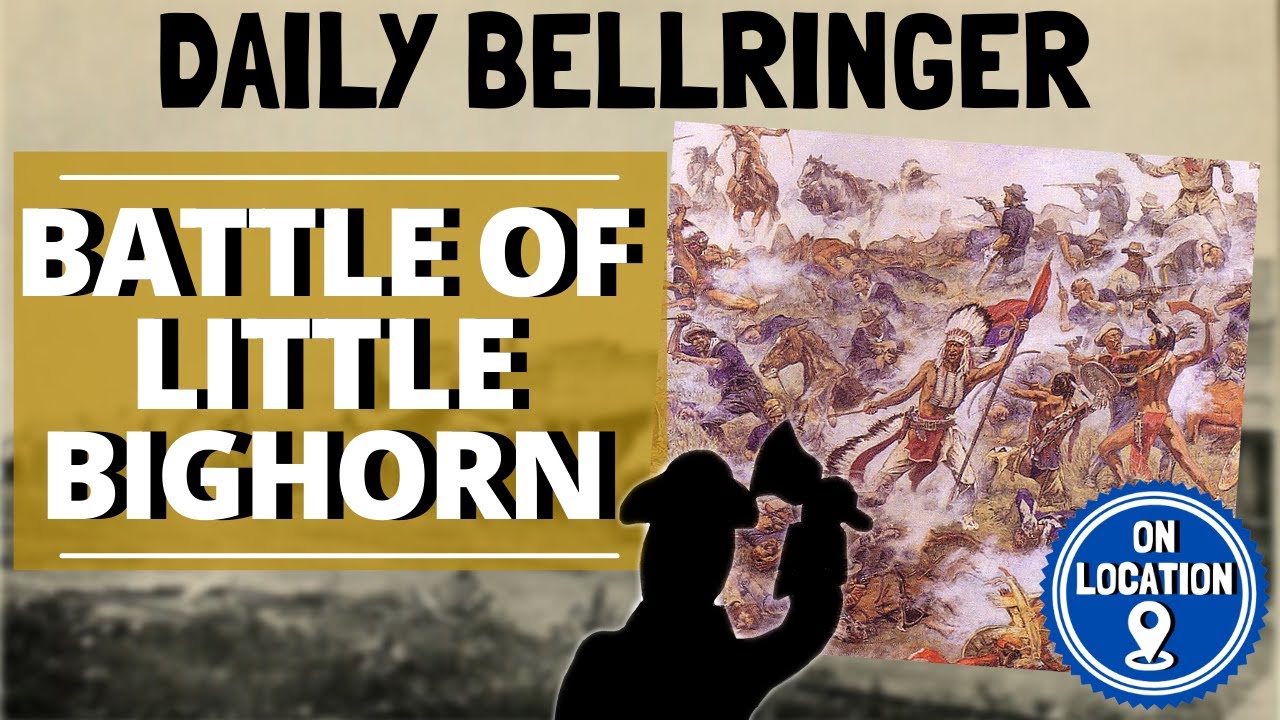Reliving Custer's Last Stand at the Little Bighorn
Summary
TLDRThe 141st anniversary of Custer's Last Stand is explored, shedding light on the dramatic events of the 1876 battle. As reenactments along Montana’s Little Big Horn River revive the fierce combat, historian Nathaniel Philbrook delves into Custer’s controversial legacy, from his earlier military victories to the fateful charge against overwhelming odds. The battle, which ended in Custer’s death and the triumph of Indian warriors led by Chief Sitting Bull, is framed within the larger context of land disputes and the hardships of Native American life. The story also highlights contrasting perspectives and the ongoing reverence for the battlefield.
Takeaways
- 😀 The 141st anniversary of Custer's Last Stand is marked with reenactments along Montana's Little Big Horn River, showcasing the violent and chaotic nature of the battle.
- 😀 The battle between Colonel George Armstrong Custer's forces and Native American tribes took place on June 25th, 1876, and was decisive, lasting just over an hour.
- 😀 Custer's legacy remains highly debated, with differing opinions about his bravery, recklessness, and eventual downfall.
- 😀 Custer was seen as a hero in his time but was also viewed as a reckless figure, even by some of his contemporaries, like historian Nathaniel Philbrook.
- 😀 Custer's early military career during the Civil War made him a hero, but his final battle in 1876 overshadowed his past achievements.
- 😀 Custer was known for his vanity and love of attention, often carefully crafting his public image with photos and social media-like techniques of the time.
- 😀 By 1876, Custer was desperate for a victory to restore his reputation, while the U.S. government was eager to secure land, including the Black Hills, home to Native American tribes.
- 😀 Native American tribes, including the Lakota, had their land and resources threatened by U.S. expansion, leading to heightened tensions leading up to the battle.
- 😀 The Indian version of the battle emphasizes the leadership of Chief Sitting Bull, whose bravery and command helped lead the warriors to victory against Custer's forces.
- 😀 Despite their victory, Native American tribes were soon after forced onto reservations, and the battle was ultimately about land and its control, rather than any lasting success for either side.
Q & A
What is the significance of the 141st anniversary of Custer's Last Stand?
-The 141st anniversary of Custer's Last Stand is celebrated annually as a reenactment of the famous battle that took place on June 25th, 1876, on the banks of Montana's Little Big Horn River.
What role does reenactment play in understanding the battle of Little Big Horn?
-The reenactment provides a way to experience the historical event by simulating the battle's sounds, sights, and chaos, offering insights into the fear and violence soldiers faced, and how the battle unfolded.
How did the Cheyenne Chief Two Moons describe the battle?
-Two Moons described the battle as a chaotic and terrifying experience, likening the way the Cheyenne warriors swirled around the soldiers to water flowing around a stone.
What is the public perception of George Armstrong Custer as discussed in the script?
-Custer is portrayed as a controversial figure, with some viewing him as a hero and others as a reckless fool. Over time, his image has shifted from a celebrated figure to one often seen as an arrogant and misguided leader.
What key events shaped Custer's legacy and reputation?
-Custer's reputation was shaped by his bravery in the Civil War, his controversial actions during the Battle of Little Big Horn, and his eventual death. His image evolved over time, especially as the perspectives on his leadership and decisions changed.
What challenges did Custer face before the Battle of Little Big Horn?
-Before the battle, Custer faced personal financial struggles, including losses in the stock market and silver mines. He also sought a lecture tour to restore his image, highlighting his desperation to regain fame.
What role did land and resources play in the battle's significance?
-The Battle of Little Big Horn was fundamentally a struggle over land, particularly the sacred land of the Lakota in the Black Hills, which was coveted by the US government due to the discovery of gold, further intensifying the conflict.
How did the Indian version of the Battle of Little Big Horn differ from the traditional narrative?
-The Indian version of the battle emphasizes the bravery and leadership of figures like Chief Sitting Bull, highlighting the spiritual and cultural significance of the land and their efforts to protect it from encroachment.
What does Native oral tradition say about Custer's death?
-According to Native oral tradition, Custer's mutilated body was recovered with his ears pierced with all to help him hear better in the afterlife, and his facial expression was a triumphant smile, symbolizing his perceived arrogance.
What was the aftermath of the Battle of Little Big Horn for the Indian warriors?
-Despite their victory, the Indian warriors' success was short-lived, as within two years, most were confined to reservations, marking a tragic and forced shift in their way of life.
Outlines

هذا القسم متوفر فقط للمشتركين. يرجى الترقية للوصول إلى هذه الميزة.
قم بالترقية الآنMindmap

هذا القسم متوفر فقط للمشتركين. يرجى الترقية للوصول إلى هذه الميزة.
قم بالترقية الآنKeywords

هذا القسم متوفر فقط للمشتركين. يرجى الترقية للوصول إلى هذه الميزة.
قم بالترقية الآنHighlights

هذا القسم متوفر فقط للمشتركين. يرجى الترقية للوصول إلى هذه الميزة.
قم بالترقية الآنTranscripts

هذا القسم متوفر فقط للمشتركين. يرجى الترقية للوصول إلى هذه الميزة.
قم بالترقية الآنتصفح المزيد من مقاطع الفيديو ذات الصلة
5.0 / 5 (0 votes)






